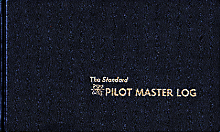

Aircraft Makes and Models for Non-Pilots
A pilot records the aircraft make and model in which their flight time for that logbook line item documents that flight (the second column in my "Standard Pilot Master Log"). For the benefit of the non-pilots reading these logbook stories, I here describe and provide photos of the most common makes and models that are mentioned in my stories and/or recorded in the accompanying logbook line item entries. Stories that have aircraft pictured on the story page don't have that same aircraft duplicated here. The aircraft makes and models are listed alphabetically by the most commonly known "maker" name, though most of these companies have changed ownership and/or name over the years since that model was introduced.
Beechcraft
BE-35: aka the "Bonanza" - a four to six place low wing piston powered propellor driven aircraft with retractable landing gear. The "V-tail" model is pictured; the 285 hp engine variant cruises about 190 mph. Typical cruise altitude is 6,000 feet. There is also a "straight tail" variant designated the BE-33 "Debonair".
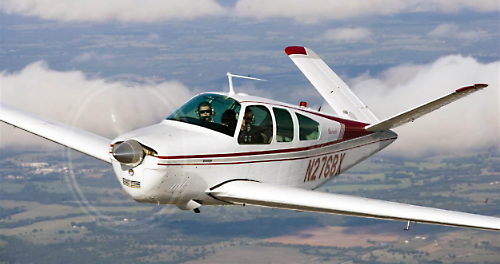
BE-200: aka the "Super King Air" - an eight passenger plus two pilots pressurized twin engine turbine powered propellor driven aircraft popular with corporations and air taxi operators for short to medium length flights. Cruise speed is about 310 mph. Typical cruise altitude is 25,000 feet.
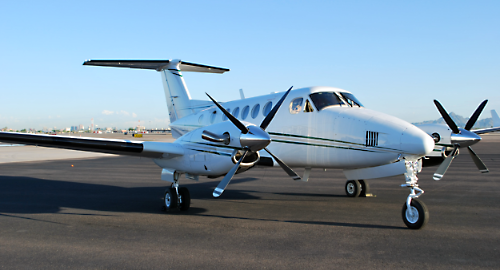
Canadair
CL-600: aka the "Challenger" - depending on interior configuration a two pilot plus eight to twelve passenger twin turbine engine fan jet powered aircraft capable of nonstop flight across the Atlantic. This model is the original; there have been many subsequent variants, including regional jet models. Cruise speed is about 530 mph. Typical cruise altitude is 37,000 feet.
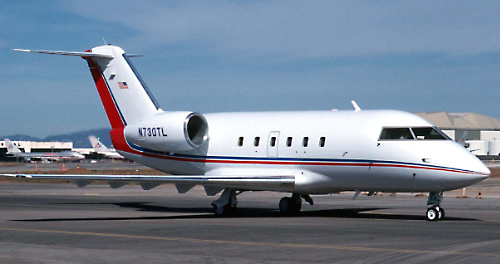
Cessna
C-150: Cessna made an extensive lineup of high wing piston-powered propellor driven light aircraft. The "150" is the smallest tri-cycle gear model in that lineup. It has two seats and is powered by a 100 hp engine. Cruise speed is about 120 mph at about 5,000 feet. The C-150 and the newer C-152 115 hp variant are arguably still the world's most popular non-military primary training aircraft.
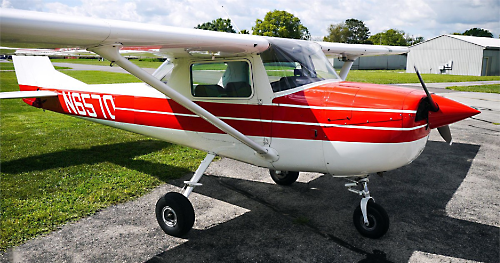
C-172: aka the "Skyhawk" - the four seat entry level model in Cessna's single engine line. It has an engine of 150 hp and cruises about 135 mph. The aircraft pictured in my story "A Lesson Learning Good Judgment" is a C-172. Other single engine Cessnas I've flown that might at some point be referenced in these stories include the 230 hp C-182 "Skylane" and the retractable gear 200 hp C-177RG "Cardinal".
CE-500: aka the "Citation" - Cessna got into the business of making jet aircraft with this small twin turbine engine fan jet. Usually configured for six passengers and two pilots, its cruise speed pushed an optimistic 400 mph at a typical altitude of 35,000 feet. Small and slow for a jet, but better than turboprops of the time, and being cheaper to operate than other jets made it possible for many corporations to take the leap.
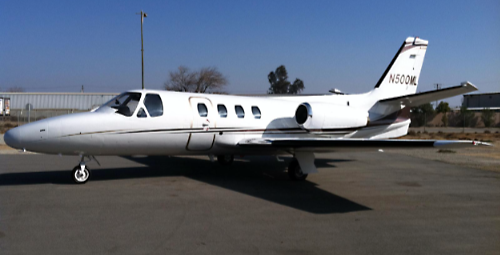
Hawker-Siddeley
HS-125: aka the "Hawker" - this designation covers a line of model variants made by various British manufacturers. The model I flew most was the -400 model retrofitted with the -731 fan jet engines. These models are crewed by two pilots and usually configured for eight passengers. Cruise speed is about 480 mph at a typical altitude of 37,000 feet. Later in my career my company replaced these aircraft with newer model variants designated as "BAe-800".
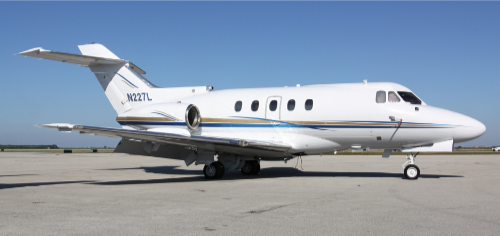
Lear
LR-35: as with many business jets a single word - "Learjet" - covers a whole range of models. The model I flew was the Lear 35 "B" model. The Lear 35's (and later variants) are twin turbine engine fan jets crewed by two pilots and usually configured for eight passengers. It's the tip tanks that make it recognizable as a Lear 35. The Lear's main claim to fame at the time was that it was able to fly high and to fly fast. Nothing special though, to compare with today's modern business jets. Back in the day it cruised about 515 mph at a typical altitude of 41,000 feet.
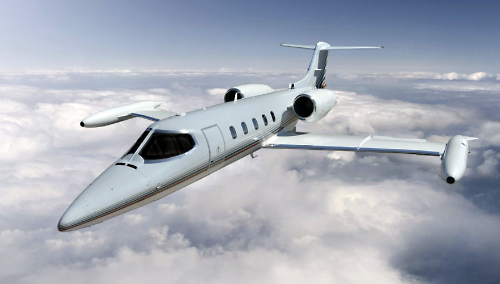
Mooney
M20C: aka the "Ranger" - the shorter-cabin four-seat 180 hp model variant of the single-engine retractable-gear aircraft generally known as "Mooneys" that are all easily recognizable by their forward-swept vertical tail. Cruised about 150 mph.
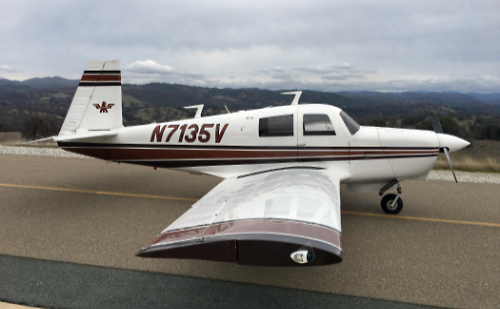
Piper
PA-28: aka the "Cherokee" - as with their direct competitor, Cessna, Piper Aircraft developed an entire line of mirror-imaged low wing aircraft. All models of their line had some sort of Native American label attached. Their "entry level" model was the Cherokee 140, which went the Cessna 150 one better by having four seats. And it proved to also be a popular primary trainer, arguably second in line to the Cessna 150. The PA-28-140 was powered by a 150 hp engine and cruised about 130 mph. The Cherokee 140's successor was the PA-28-141 "Warrior". Other fixed gear Cherokee models were the 180 hp "Archer" and the 235 hp "Dakota" (among other lesser-known and less-successful variants).
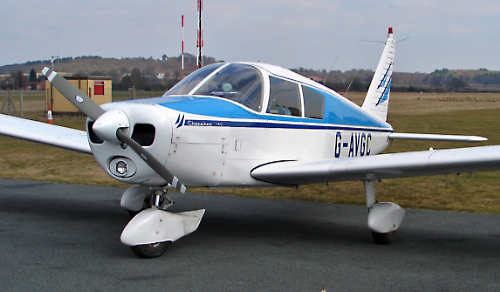
PA-28R: aka the "Arrow" - the retractable gear version of the four seat Cherokee line, later variants powered by 200 hp and capable of about 150 mph. And faster than the Cessna Cardinal "RG" competitor.
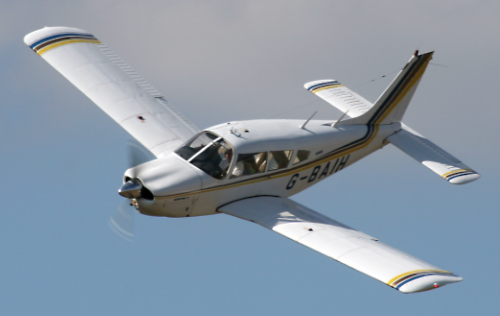
PA-32: aka the "Cherokee Six" - because it had a capacity of six seats. Plus, it also had both a nose and aft baggage compartments, and side fuselage entry doors, which made it one hell of a airplane for loading people plus large (and heavy) baggage and cargo. There was a 260 hp model and later, a 300 hp model, both with fixed landing gear. The 300 hp model could cruise at about 165 mph.
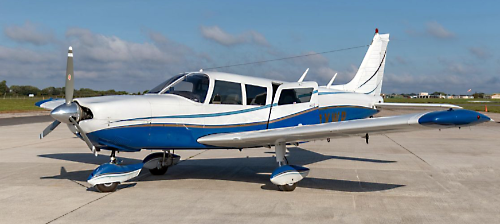
PA-32R: aka the "Lance" - is the retractable gear version of the 300 hp Cherokee Six, with the same interior configuration and side doors, but a little bit faster at about 175 mph.
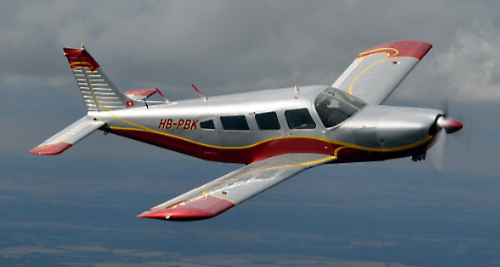
PA-30: aka the "Twin Commanche" - Piper made a couple of different entry level approaches into the twin engine market. This one was based on their "Commanche" single engine airframe, and featured two 160 hp piston engines and a four seat interior. It was actually a pretty decent little twin, but by the time I got around to flying them they were already pretty old. But never mind, I used one to get my multi engine rating. Cruise speed was a about 175 mph.
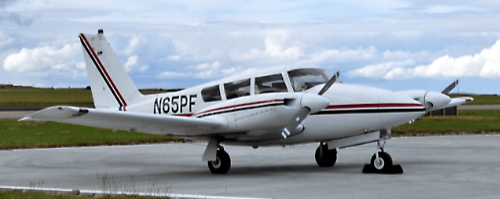
PA-23: aka the "Aztec" - Piper's main six place piston twin after an earlier airplane with the same model number called the "Apache" really never took off (under powered and only four seats). This is the airplane in which I did most of my twin engine charter flights while working for the FBO. Also my multi engine student instruction. It was powered by two 250 hp piston engines and cruised about 175 mph. You might want to note the small rectangular object in front of the pilot's windscreen. This is the heated windshield deicing panel referred to in my "Icy Airplane Flops..." story.
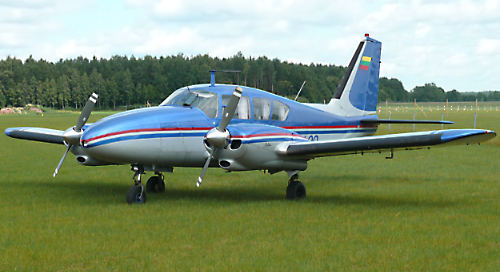
PA-34T: aka the "Seneca II" - Piper's "economy" class six place piston twin based on the Cherokee Six fuselage and powered by a pair of turbocharged 200 hp engines. Featured side fuselage doors and club seating like the "Six", which made it popular for business passenger charter flights, but also its easily removable seats and those doors made it a perfect freight hauler. Cruise speed was about the same as the Aztec, but didn't diminish with altitude due to the turbos.
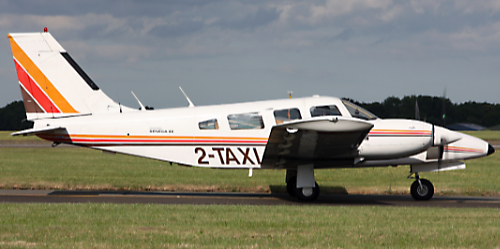
PA-31: aka the "Navajo" - of which there are several variants of cabin length and engine power - Piper's top-of-the-line "cabin class" turbocharged piston twin engine aircraft. The model I flew was the "C/R" which featured 325 hp per side and counter-rotating propellors, seven passengers plus pilot, nacelle lockers, and a cruise speed of about 195 mph. Definitely my favorite Piper aircraft.
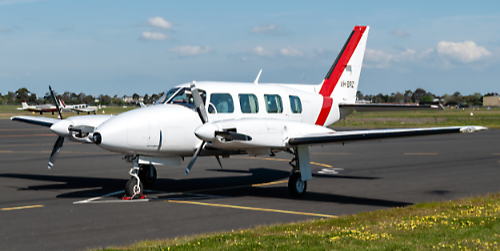
03/11/2023
-------------------------------------------------------------------